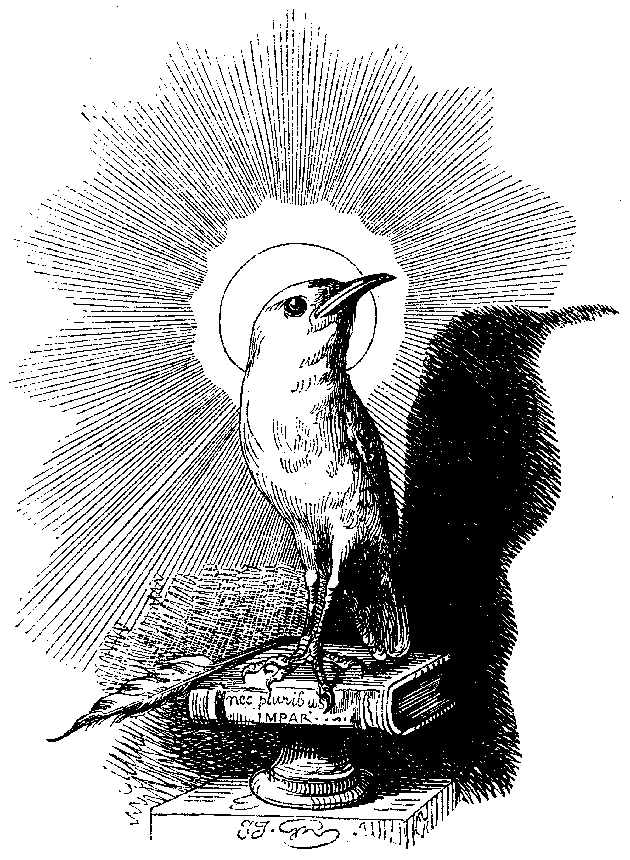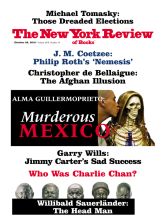
The following talk was given at the opening of a conference at Harvard on October 1 to discuss the possibility of creating a National Digital Library.
The purpose of this meeting is to discuss a question of vital importance to the cultural life of our country: Can we create a National Digital Library? That is, a comprehensive library of digitized books that will be easily accessible to the general public. Simple as it sounds, the question is extraordinarily complex. It involves issues that concern the nature of the library to be built, the technological difficulties of designing it, the legal obstacles to getting it off the ground, the financial costs of constructing and maintaining it, and the political problems of mobilizing support for it.
Despite the complexities, the fundamental idea of a National Digital Library (or NDL) is, at its core, straightforward. The NDL would make the cultural patrimony of this country freely available to all of its citizens. It would be the digital equivalent of the Library of Congress, but instead of being confined to Capitol Hill, it would exist everywhere, bringing millions of books and other digitized material within clicking distance of public libraries, high schools, junior colleges, universities, retirement communities, and any person with access to the Internet.
The ambition behind this project goes back to the founding of this country. Thomas Jefferson formulated it succinctly: “Knowledge is the common property of mankind.” He was right—in principle. But in practice, most of humanity has been cut off from the accumulated wisdom of the ages. In Jefferson’s day, only a tiny elite had access to the world of learning. Today, thanks to the Internet, we can open up that world to all of our fellow citizens. We have the technical means to make Jefferson’s dream come true, but do we have the will?
I know: the devil can cite Jefferson. Anyone can cull through the papers of the Founding Fathers in order to find quotations in support of a cause. But I can’t resist. Here is Jefferson again:
If nature has made any one thing less susceptible than all others of exclusive property, it is the action of the thinking power called an idea…. He who receives an idea from me, receives instruction himself without lessening mine; as he who lights his taper at mine, receives light without darkening me.
Jefferson was thinking about the effects of printing, of books, and of reading—a favorite subject of the Founding Fathers. Here is Franklin:
The art of printing…diffuses so general a light…that all the window shutters despotism and priestcraft can oppose to keep it out, prove insufficient.
And John Adams:
And you, Messieurs printers, whatever the tyrants of the earth may say of your paper…are so much the more to your honor; for the jaws of power are always opened to devour, and her arm is always stretched out, if possible, to destroy the freedom of thinking, speaking, and writing.
“Despotism and priestcraft” have an antiquated ring to them, but the danger of restricting access to knowledge is as great today as it was two hundred years ago. Here is a copyright notice attached to a recent electronic edition of Alice’s Adventures in Wonderland, which was first published in 1865:
Copy: No text selections can be copied from the book to the clipboard….
Lend: This book cannot be lent to someone else.
Give: This book cannot be given to someone else.
Read aloud: This book cannot be read aloud.1
Contrast that statement, made only yesterday, with the following remarks by Voltaire after the publication of his Questions sur l’Encyclopédie in 1772: “It is hereby permitted to any bookseller to [re]print my silliness, be it true or false, at his risk, peril, and profit.” As Lewis Hyde put it in his recent book, Common as Air, an enclosure movement is threatening to destroy our cultural commons, the world of knowledge that belongs to us all.
I realize that intellectual property is a complex subject. Instead of raising the vexed question of copyright at this stage, I want to make a different point, one that has to do with the principles behind the founding of our country.
The Founding Fathers did not merely turn out quotable remarks, they meant what they said, and that meaning is valid today—unless you think the Constitution has been rendered obsolete by the Internet. Behind the creation of the American republic was another republic, which made the Constitution thinkable. This was the Republic of Letters—an information system powered by the pen and the printing press, a realm of knowledge open to anyone who could read and write, a community of writers and readers without boundaries, police, or inequality of any kind, except that of talent. Like other men of the Enlightenment, the Founding Fathers believed that free access to knowledge was a crucial condition for a flourishing republic, and that the American republic would flourish if its citizens exercised their citizenship in the Republic of Letters.
Advertisement
Of course, literacy was limited in the eighteenth century, and those who could read had limited access to books. There was an enormous gap between the hard realities of life two centuries ago and the ideals of the Founding Fathers. You could therefore accuse the Founders of utopianism. For my part, I believe that a strong dose of utopian idealism gave their thought its driving force. I think we should tap that force today, because what seemed utopian in the eighteenth century has now become possible. We can close the gap between the high ground of principle and the hardscrabble of everyday life. We can do so by creating a National Digital Library.
Or is the idea of such a library utopian in a negative sense—that is, unrealistic, quixotic? I would answer No, for the following reasons:
• Google, in digitizing large numbers of books and making many of them available online, has demonstrated its feasibility. True, Google is a commercial operation, which puts corporate profit ahead of the public good, but it is also a success story with a lesson to be learned: we can mobilize the technology and master the logistics that are necessary to digitize the holdings of our research libraries on an enormous scale.
• A coalition of libraries could be created to provide most of the books readers would want.
• A coalition of foundations, universities, and other nonprofit organizations could be formed to cover the costs.
• A central organization could be designed to handle the problems of coordination, processing, and preservation.
I don’t want to minimize those problems, but I think we should approach them with a can-do spirit. After all, we have acquired a great deal of experience with digitization. Every research library has developed digital projects, some of them on a very large scale. And libraries have cooperated with one another and with outside agencies in all sorts of initiatives that could be useful and instructive in the creation of a National Digital Library. Think of HathiTrust, the Internet Archive, the Knowledge Commons Initiative, the California Digital Library, the Digital Library Federation, the National Digital Information Infrastructure and Preservation Program, and other nonprofit enterprises. They have opened many routes toward what could be a common goal. I hope that we can arrive at a consensus about the general nature of that goal; and whatever our differences, I don’t think we should be deterred by misplaced worries about feasibility. We have enough expertise and experience to get the job done.
Moreover, we can learn from the experience of other countries. Virtually every developed country has launched some kind of national digital library, and many developing countries are doing the same. They have worked through all sorts of problems and have arrived at viable solutions. If they have not come up with one model that fits countries of all sizes, they have demonstrated that the idea of a national digital library can be put into practice. It is not just true but tried.
Here at Harvard, we have conducted a preliminary survey of the projects underway in other nations. We have even located an incipient NDL in Mongolia. The Dutch are now digitizing every Dutch book, pamphlet, and newspaper produced from 1470 to the present. President Sarkozy of France announced last November that he would make f750 million available to digitize the nation’s cultural “patrimony.” And the Japanese Diet voted 12.6 billion yen for a two-year crash program to digitize their entire national library. If the Netherlands, France, and Japan can do it, why can’t the United States?
I propose that we dismiss the notion that a National Digital Library of America is far-fetched, and that we concentrate instead on what we can learn from others about issues such as: How can we deal with the problem of copyright and of orphan books, i.e., books whose copyright holders can’t be located? How can we cope with the complexities of metadata—that is, catalog-type information necessary to locate digital texts in the ever-changing environment of cyberspace? How can we find funding and develop a business plan that will resolve the long-term difficulties of collection management and preservation? I hope this meeting will provide an opportunity to discuss these “how” questions.
But above all I hope that it will promote the general goal of providing the American people with the kind of library they deserve, the kind that meets the needs of the twenty-first century. We can equip the smallest junior college in Alabama and the remotest high school in North Dakota with the greatest library the world has ever known. We can open that library to the rest of the world, exercising a kind of “soft power” that will increase respect for the United States worldwide. By creating a National Digital Library, we can make our fellow citizens active members of an international Republic of Letters, and we can strengthen the bonds of citizenship at home. We can find the money and the skill, but can we find the will? That is the question that I would like to put at the outset of this meeting and that I hope will be answered at the end.
Advertisement
This Issue
October 28, 2010
-
*
This and the previous quotations are taken from Lewis Hyde, Common as Air: Revolution, Art, and Ownership (Farrar, Straus and Giroux, 2010). ↩



